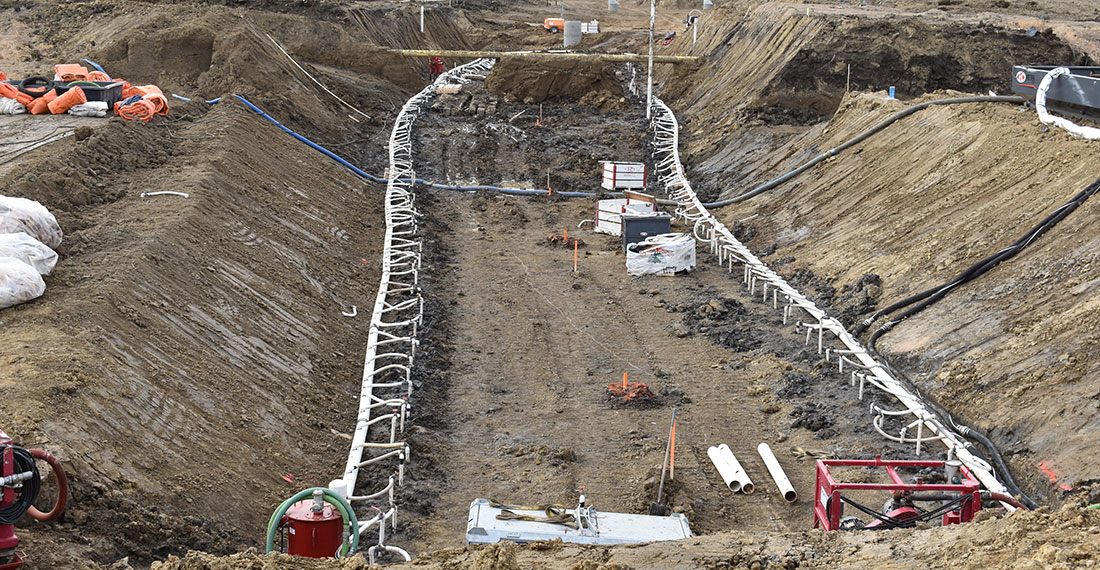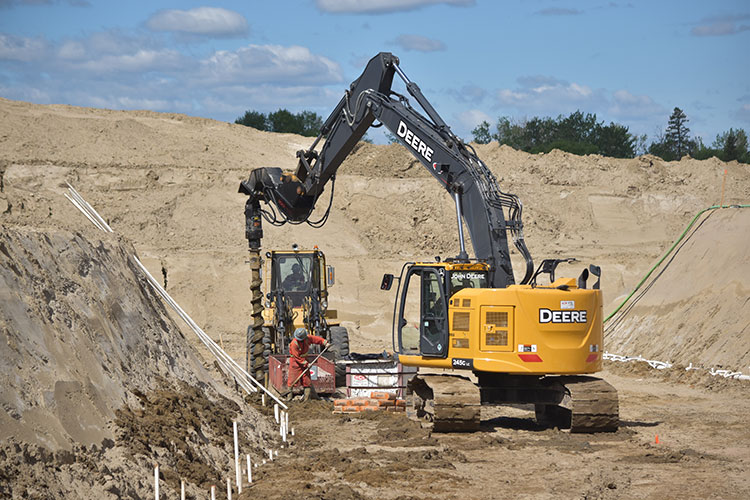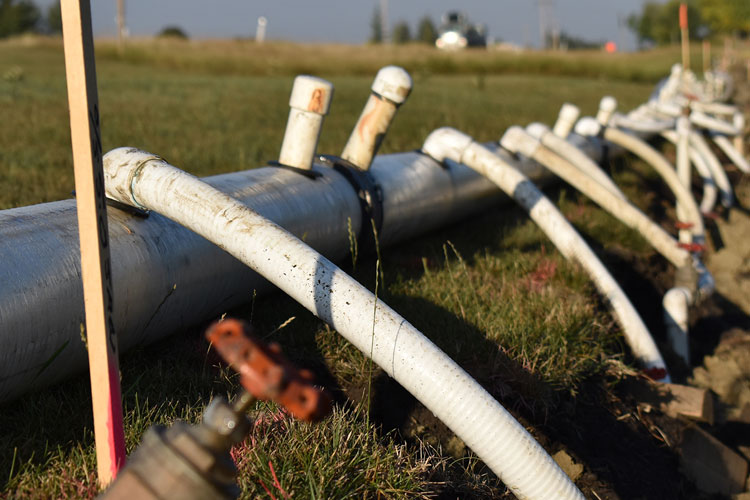Wellpoint Dewatering
Sucking water out of the ground allows excavations to be dug safely

Wellpoint dewatering is a technique that involves digging numerous small-diameter wells and installing “wellpoints” in a defined area. Wellpoints are small diameter pipes made from PVC or steel, up to seven metres long (think of them as giant straws) with a screen or small slits cut in the bottom half-metre. Wellpoints are installed one or two metres apart, about one metre from the edge of the excavation. Then filter sand is poured around the wellpoint to filter out fine silt from entering the system and plugging the screen. The wellpoints are connected through a series of swing joints and header pipes to a vacuum system. Suction is applied to suck water out of the ground and pump it far enough away that it won’t re-enter the water table in the area to be excavated.


The maximum vacuum level is affected by altitude, so the drawdown ability of a single-stage system is typically about 5.5 metres. Systems can be installed in multiple stages to overcome this limitation.
Dewatering this way will stabilize the slope of the excavation allowing for a smaller hole and eliminate the need for a shoring box in many cases as well as reduce the amount of material being removed, saving time and money.
This method of dewatering is heavily used and efficient for open trench excavations, directional drilling, receiving pits and remediation projects. Once the excavation is backfilled, the wellpoints are removed.
